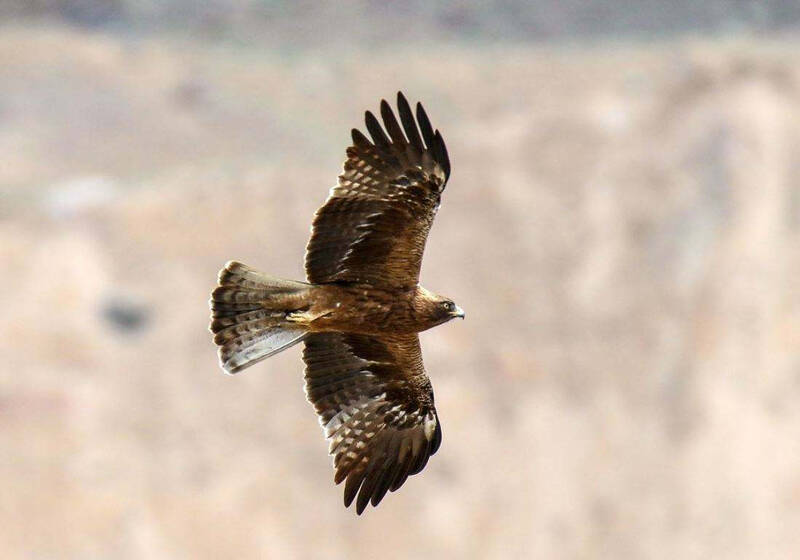Hieraaetus pennatus
IUCN
LCBasic Information
Scientific classification
- name:Hieraaetus pennatus
- Scientific Name:Hieraaetus pennatus,Booted Eagle,Booted eagle, Booted falcon eagle
- Outline:Raptor
- Family:Falconiformes Accipitridae Falconiformes
Vital signs
- length:42-51
- Weight:510-1250g
- lifetime:20-70years
Feature
Often circling back and forth in the sky, flying very fast
Distribution and Habitat
Existing: Algeria, Angola, Austria, Bangladesh, Benin, Botswana, Bulgaria, Burkina Faso, Burundi, Cameroon, Central African Republic, Chad, Congo, Democratic Republic of the Congo, Cyprus, Côte d'Ivoire, Djibouti, Egypt, Eritrea, Eswatini, Ethiopia, France, Gambia, Georgia, Ghana, Gibraltar, Greece, Islamic Republic of Iran, Iraq, Israel, Kenya, Lebanon, Lesotho, Libya, Malawi, Malaysia, Mali, Mauritania, Moldova, Montenegro, Morocco, Mozambique, Myanmar, Namibia, Niger, Nigeria, Oman, Portugal, Romania, Rwanda, Senegal, Serbia, Sierra Leone, Somalia, South Africa, Spain, Sri Lanka, Sudan, United Republic of Tanzania, Thailand, Togo, Tunisia, Uganda, United Arab Emirates, Western Sahara, Yemen, Zambia and Zimbabwe.
Present (breeding): Afghanistan, Albania, Armenia, Azerbaijan, Belarus, Bhutan, Bosnia and Herzegovina, China, Croatia, Germany, Hungary, India, Kazakhstan, Kyrgyzstan, Mongolia, Nepal, Pakistan, Poland, Russian Federation, Slovakia, Slovenia, Tajikistan, Turkey, Tur
Appearance
The forehead and eyes of the Booted Falcon are white first, and the top of the head to the back of the neck and sides of the neck are dark brown or dark brown with dark brown vertical stripes, especially the top of the head is wider; there are usually narrow black eyebrow lines, the back and waist are earthy brown, and the outer sides of the shoulders and The innermost secondary flight feathers, minor coverts and middle coverts on the wings are lighter, with broad white or light yellow feather edges and dark rachis stripes; the large coverts and primary coverts are black with narrow light edge edges. ; The primary flight feathers are black, with white horizontal spots and spots at the base of the inner feathers. The long tail upper coverts are light yellowish brown or yellowish white, the tail feathers are tan or dark brown, with dark grayish brown horizontal spots on the upper side, and light gray below with no spots. The lower body is pure white or yellow-skinned, with brown vertical
Details
Booted Eagle, a medium-sized eagle with no subspecies.

The Booted Eagle's nesting area is wide, from Spain and North Africa to Northeast China, distributed in mid-latitudes. It will spend the winter in sub-Saharan Africa, avoiding the dense forests of the central and western parts of the country and the Indian subcontinent. Therefore, he is a great immigrant. Migration records are from March to April and from September to October.
The Booted Eagle mainly feeds on rodents, hares, small birds, young birds, and reptiles. It mainly forages in various types of forests. The main way of foraging is to hide among the branches and leaves, and suddenly attack and rush to the prey when the prey appears; they also fly at high speed among the trees to chase prey; sometimes they soar and circle in the sky to search for prey, and when they find it, they bend and fold their wings and dive down quickly to catch it.
The breeding season of the booted falcon is from April to June. In mid-April, pairs can be seen flying over the forest for courtship, and they keep singing. They usually nest on tall trees in the forest, 5-20 meters above the ground. The male and female parents build nests together. The nests are mostly placed on the branches of the upper part of the tree. The structure is relatively large and simple, mainly composed of dead branches. Green leaves and branches are brought in for reinforcement during the entire nesting period. The nest is disc-shaped, with a diameter of 50-80 cm, and sometimes old nests of other birds are also used. Each nest usually lays 2 eggs, occasionally as many as 3 or as few as 1. The eggs are blue, white, greenish white or off-white, sometimes with inconspicuous reddish or yellowish brown spots. The eggs are oval, 56-64 mm × 42.5-48.5 mm in size, with an average of 56.4 mm × 45.6 mm. After the first egg is laid, incubation begins, mainly undertaken by the female bird, and incubation lasts about 32-34 days. The young birds grow slowly and begin to leave the nest at around 50-60 days old, but they will stay in the nest provided by their parents for a while.
Overall, the trend of the Booted Eagle population is considered unknown. The species is declining in some areas due to forest destruction, human disturbance, and a decrease in natural enemies and prey. In Europe, the population size is estimated to be increasing.
Listed in the IUCN Red List of Threatened Species in 2016 ver 3.1-Least Concern (LC).
Listed in China's National List of Key Protected Wildlife (February 5, 2021) Level 2.
Protect wildlife and eliminate game.
Maintaining ecological balance is everyone's responsibility!








